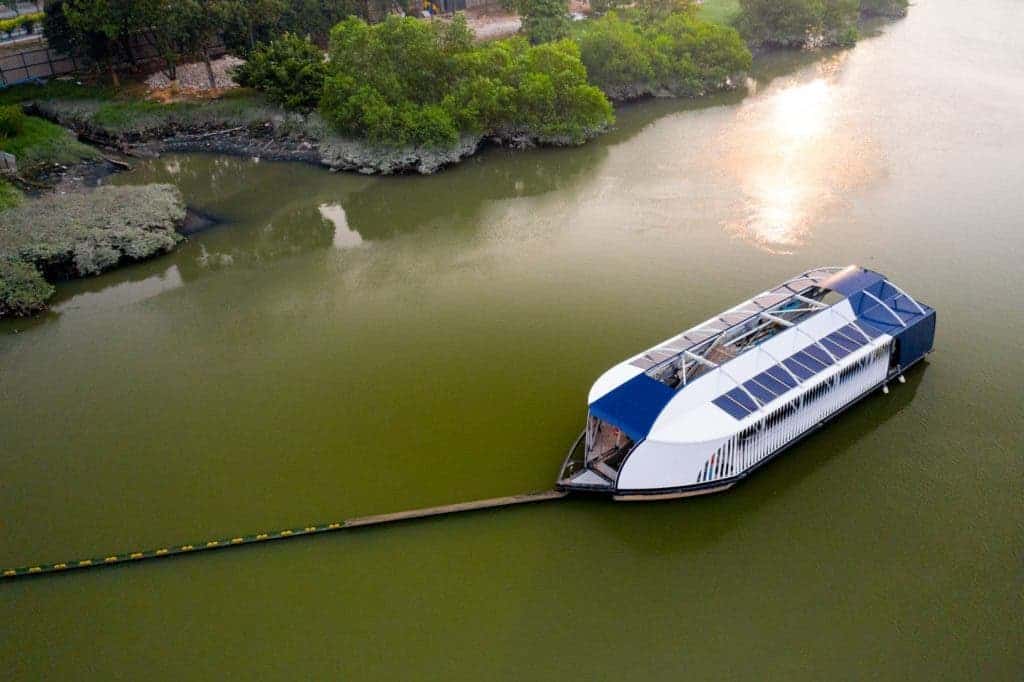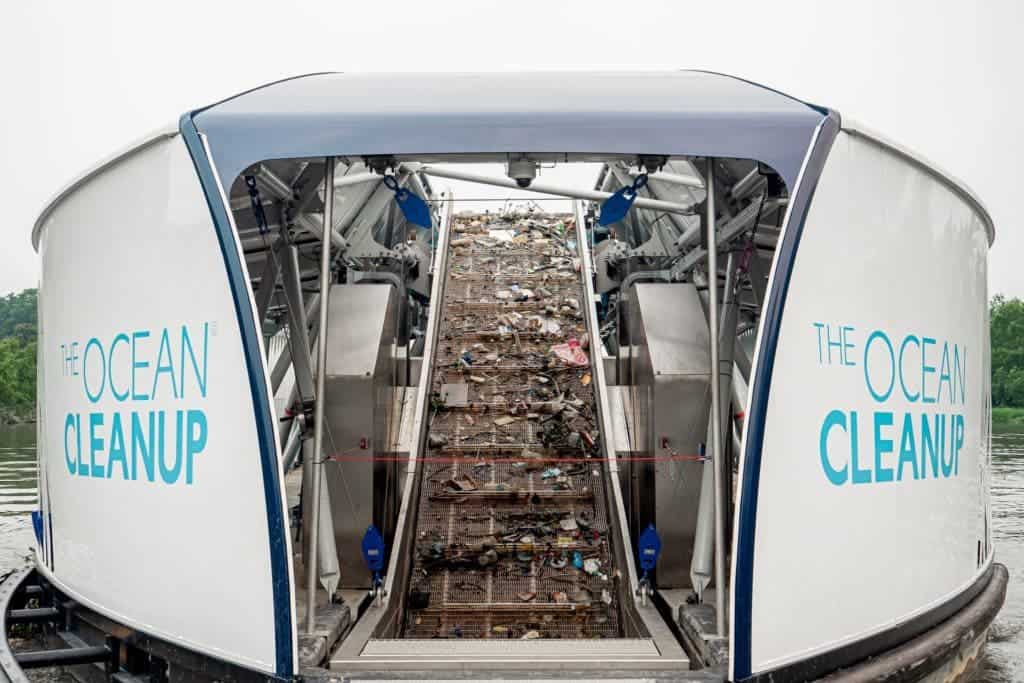Seeking to find new solutions to the global plastic problem, the non-profit organization The Ocean Cleanup unveiled a new project meant to cut off ocean plastic at the source by cleaning up 1,000 of the world’s most polluted rivers by 2025.

About 1% of rivers are actually responsible for 80% of the plastic that ends up in the ocean so the project will prove critical. To that end, The Ocean Cleanup has announced The Interceptor—a new scalable solution to tackle river plastic.
The ship is essentially a catamaran that glides across the surface of rivers, channeling plastic toward a conveyor belt. The trash then gets deposited into the attached dumpsters.
“To truly rid the oceans of plastic, we need to both clean up the legacy and close the tap, preventing more plastic from reaching the oceans in the first place,” said Boyan Slat, Founder and CEO of The Ocean Cleanup. “Combining our ocean cleanup technology with the Interceptor, the solutions now exist to address both sides of the equation.”

The Interceptor moves with the water’s current, so it doesn’t need to be towed. Plastic on the water’s surface gets pushed by the current toward a conveyor belt, then funneled into six dumpsters on a separate barge that floats underneath the vessel.
When the dumpsters get full, the system sends a message to operators on land. The operators can then dispatch a boat to tow the barge (and the plastic waste) to shore. The Ocean Cleanup estimates that one vessel can remove around 110 tons of plastic per day.
The organization said the vessel is designed to operate in almost any river, but it can be tailored to suit different types of conditions. For example, some rivers have a concentrated path of debris, so the conveyor belt can simply take in the trash that flows toward the vessel; in other cases, a guardrail can channel plastic toward the vessel’s mouth.
A first prototype was dispatched in the Cengkareng Drain, a river that runs through Jakarta, Indonesia. It includes a guardrail to funnel plastic toward the conveyor belt. Instead of depositing trash into dumpsters, the belt dumps waste into giant garbage bags that are then towed to shore.

At the same time, a second prototype was dispatched in the Klang River in Malaysia. The waterway abuts Port Klang – a well known dumping ground for plastic waste. On that vessel, the conveyor belts send plastic directly into dumpsters on the floating barge.
The organization plans to deploy one of the remaining prototypes in Vietnam’s Mekong Delta, and the other in a river in Santo Domingo, the capital of the Dominican Republic. By the end of 2025, The Ocean Cleanup hopes to deploy their vessel in the thousand rivers worldwide that send the most plastic pollution into the ocean.
Around 8.8 million tons of plastic enter the world’s oceans each year. Over time, this trash can accumulate in offshore garbage patches and linger there for decades. The largest of these vortexes, the Great Pacific Garbage Patch, is located in the Pacific Ocean between Hawaii and California.



